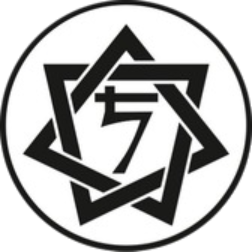THREE WHALES, TWO SCARECROWS
The three types of astrology into which it can be divided and the misconceptions associated with them.


Three Whales, Two Scarecrows
There are three types of astrology into which we could conditionally divide it. Most people associate all three with astrology, although only one type represents what it really is.
The first type is what could be called physical astrology, most closely related to astronomy: solar and lunar eclipses, full moons and new moons, planetary transits, the appearance of comets, asteroids and other space debris in the astronomical minds of astrologers. This is a peculiar bastardisation of the Aristotelian tradition, distorted beyond recognition by modern psychologists of astrology.
The second type is directly related to the first and represents a psychological interpretation of these celestial phenomena, presented with a dash of Jung, Rudhyar and Leo for greater intensity, in the form of the illusion of free will and the supposed omnipotence of Dumbledore.
The third type has nothing to do with the first two and represents a predictive art based on celestial symbolism, for which it is not so much the physical influences of the planets that matter — because they have no significance for astrology at all — as the reflections that the sky carries in its own language of destiny and predestination.
The difference between the latter and the first two is roughly the same as between the body and the soul, form and what fills it. Physical celestial phenomena have never had any connection with events, either in the life of the state or in the lives of ordinary people. They were harbingers at the very beginning, when astrology interpreted omens, and symbols and reflections in subsequent centuries, when it grew into a predictive discipline, occasionally disturbed by the mathematical and materialistic explorations of some astrologers, such as Ptolemy or Al-Kindi. But if Al-Kindi, in his treatise ‘On Rays’, makes a concession in favour of natural philosophy and materialism in order to justify astrology in the eyes of the scientific community of the 9th century, so that astrology could become part of the disciplines of knowledge of that time and not be dismissed as superstition, Ptolemy not only displays complete ignorance of the predictive disciplines, but also sows the seeds of discord between symbolism and materialism, astrology and astronomy, which in the future bore fruit in the form of three conditional types of astrology: materialism, psychology and destiny, or the soul of predictions.
When people say that the full moon somehow awakens somnambulism in humans, as well as certain tendencies towards an increase in the number of abnormal psychos in society, they believe that they are talking about astrology, although this has nothing to do with astrology. Solar activity cycles, lunar and planetary cycles, as well as various chemical, magnetic and other emissions from celestial bodies, are astronomy and astrophysics, but not astrology. This is the main confusion in the minds of modern astrologers, who are unable to separate the wheat from the chaff, astrology from astronomy and astrophysics.
Natural philosophical explanations of the actions of the planets, based on the Aristotelian tradition, were made solely to show the interconnection of everything in the material cosmos, nothing more. They were not an attempt to explain the root causes. Only consequences. Until this is understood, we will always have three imaginary whales, one of which is a whale, and two are scarecrows.
Subscribe to our blog



